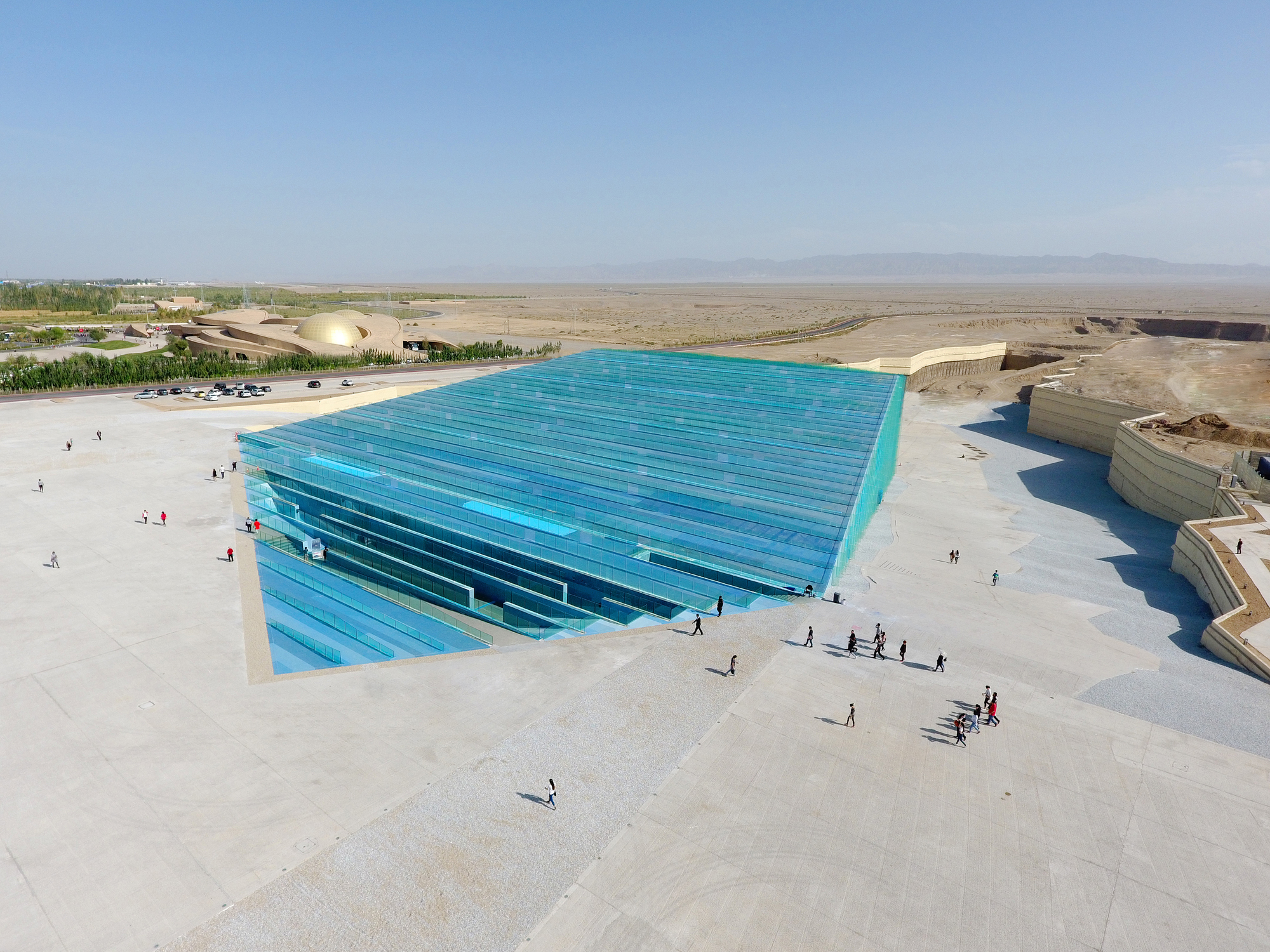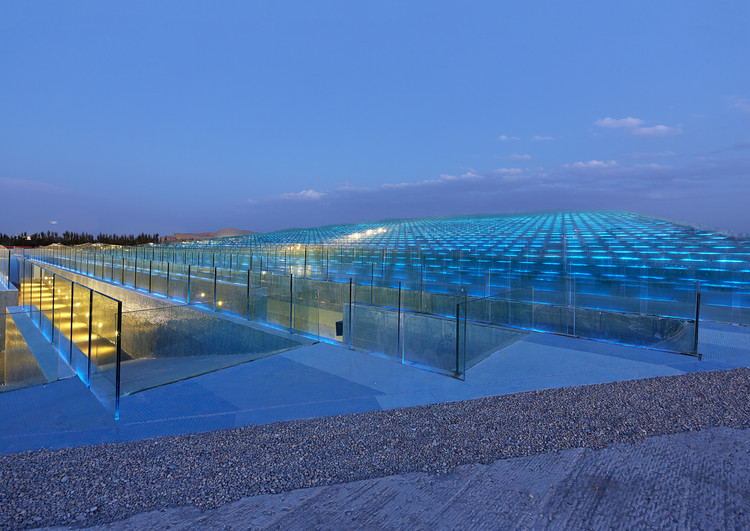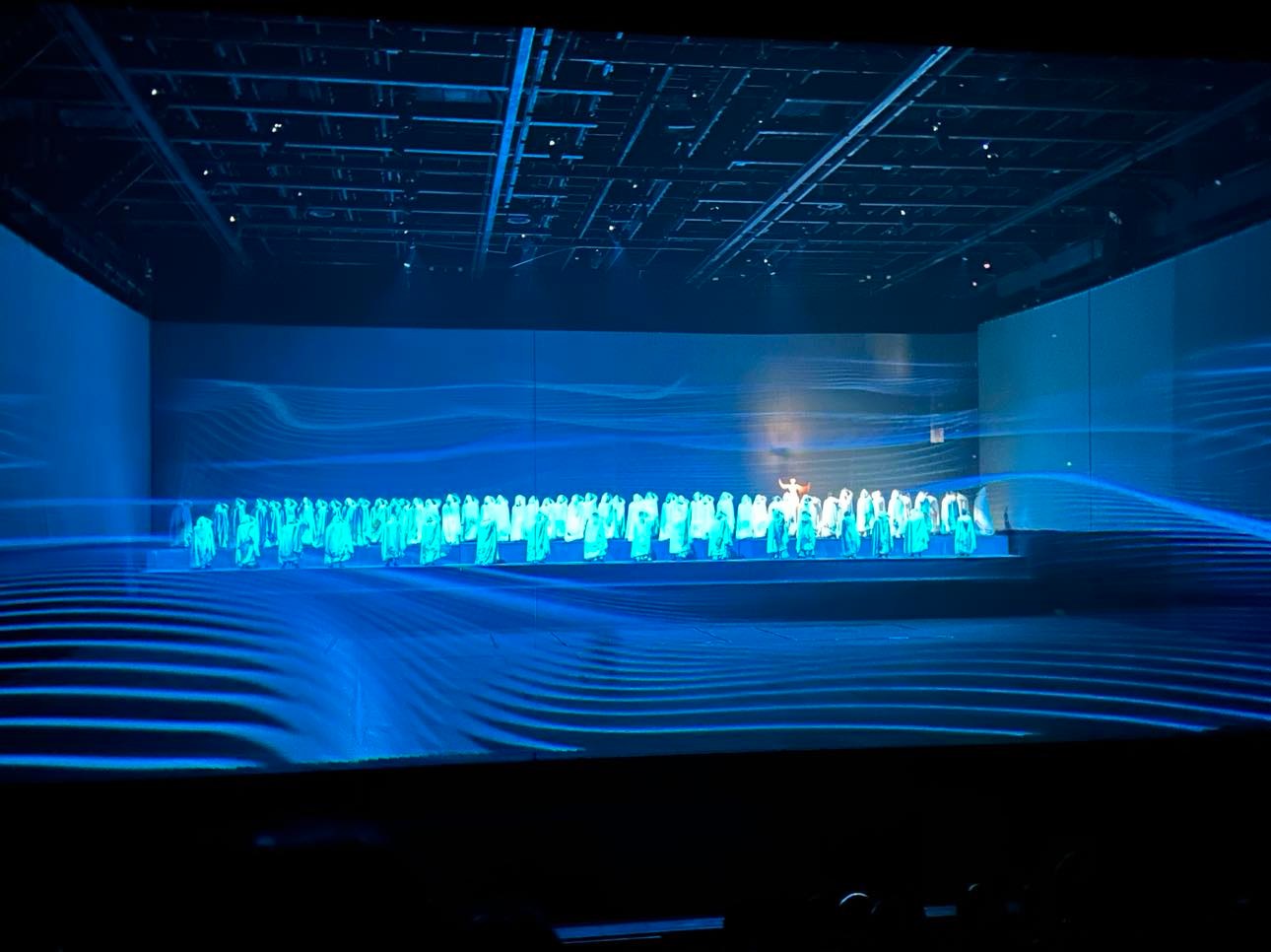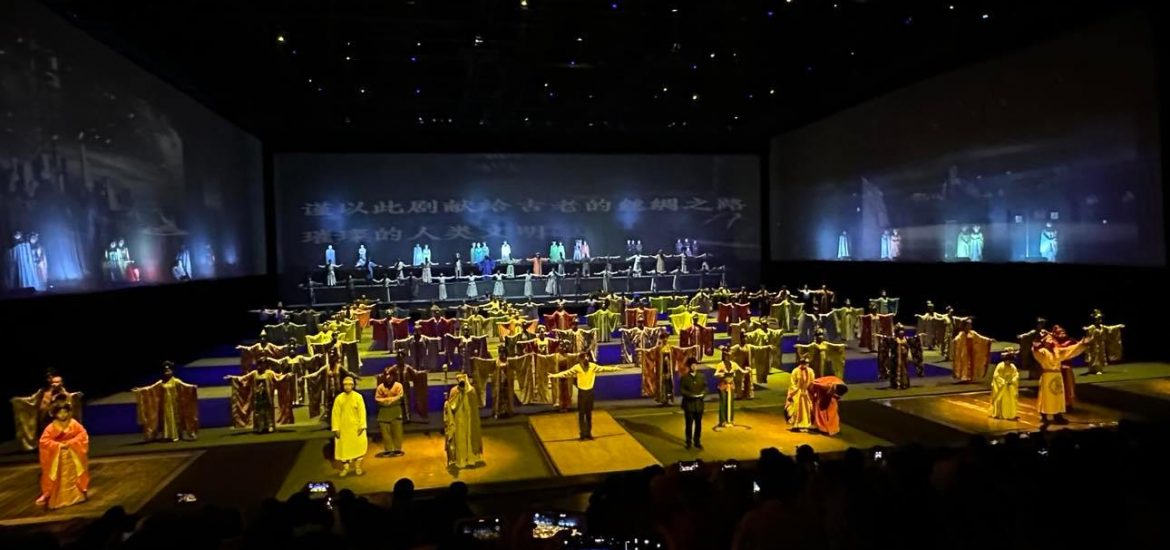Encore Dunhuang is an epic . . . phenomenon that debuted in 2017 at the Silk Road Dunhuang International Cultural Expo. I struggle to classify Encore Dunhuang in a single word: “walk-in theater” does not do justice to just how much walking audiences had to do to move from zone to zone, and “performance” seems not to encompass all the mediums it deploys, from acrobatics to contemporary dance to singing.
“Interactive spectacle” is the term used by its developer, Impression Wonders Arts Development Co., Ltd. (IWAD), which seems fitting since the director, Ms. Wang Chaoge, was co-director (alongside Zhang Yimou) of the opening ceremony at the Beijing 2008 Olympic Games. I would call it a spectacle with stories, multiple stories, about the Silk Road. “Silk Road spectacle” sounds about right.
While little known in the West, the show’s acclaim inside China comes from its massive budget, colossal cast of characters, and lavish set pieces. IWAD claims that Encore Dunhuang is a “jewel in the crown” of the Encore series, which includes titles like Encore Mount Wutai. The pandemic put a stop to this Silk Road spectacle for several years, but shows resumed in 2023, after COVID measures were loosened in China. Since then, audience numbers have rocketed back up, with the Encore Dunhuang theatre (formally called the Aqua Blue Theatre) doing three shows each day.

On that note, it is impossible to review this show without pointing out the essential role played by the Aqua Blue Theatre’s intricate architecture and interior design. Milly Mo’s excellent article covering the theater’s features should be referenced in full, but to actually enter it is an experience of its own. It is huge, with a construction area of 65,000 square meters and a gross floor area of 19,900 square meters. As is described by the company tasked with lighting the entire theater and its intricate rooms and passages, “The 90-minute performance guided audience members on a journey through time, providing them with an immersive experience of some of the key events and characters from the 2,000-year history of the city of Dunhuang.” (Claypaky)
From the moment I lined up and found myself among a huge sea of people, we were shepherded by professional staff who are trained in crowd control to four “zones,” each with its own highlights. They are divided by topic rather than time period, but remain interconnected thematically to present a historical panorama that mixes in the wondrous. One cannot avoid wonder when there is time travel, talking ghosts, and visions of bodhisattvas involved.

Zone A is full of bombast and melodrama, highlighting the unique personalities of an entire host of Silk Road characters with a full catwalk-esque act (featuring falling sand from installations above on each side). The writers, in a stroke of creative genius, draw from the cave murals for inspiration, and audience members are treated to a full procession of real-life characters, from Tang emperor Xuanzong to even a handsome, square-jawed Chang Shuhong in his youth. There were so many that it has to be seen to be believed.
My favorite zone was Zone B, which is devoted completely to its protagonist (or anti-hero) Wang Yuanlu. The performance home page describes the elaborate set as depicting “the remorse and piety of a Taoist monk who discovered the Flying apsaras by chance and sold it by ignorance.” (sanxiang-sh.com) Anyone familiar with the history of the Dunhuang Caves would recognize Wang as the monk who sold a heap of the Library Cave’s (Cave 17) manuscripts to foreign explorers and scholars, a sore point during a particularly low point of modern Chinese history.
The Dunhuang Academy character travelling back in time to stop Wang from selling the scrolls was a particularly nice touch – he fails, of course. Wang’s actor, knowing that he has landed the most notorious role, takes every chance to chew the scenery, throwing himself completely into the role of a snivelling, self-justifying ignoramus easily tricked by foreigners: the caricature of Old China that patriotic Chinese love to hate. I joked to my companion who took me to the show, mystic-artist Rebecca Wong Howe, that the actor must surely be the best-paid to play such a reviled character. What was even more extraordinary, though, was that it was not all about bashing Wang. He enjoys a redemptive arc, in which he realizes his error and begs the bodhisattvas for forgiveness. Guan Yin appears after a powerful lightning storm as the scriptures Wang sold are shipped away, and reassures him that she is everywhere.

Zone C was particularly creative in its use of 3D installations, movable screens, and a labyrinthine experience that reveals the lives of different characters in 16 interactive grottoes. It is impossible to see every scene. Rebecca and I were shepherded into a scene of a Dunhuang Academy researcher character speaking to one of the long-dead women on the Mogao Cave walls, who is horrified to learn that her face has been oxidised and damaged. One example of a mechanism is a descending ceiling (inside which is encased sand), simulating the burial of a grotto over time. Other stories include those of military commanders Suo Jing and Zhang Yichao, or Bhaisajyaguru Buddha.
Finally, Zone D is basically Zone C, but from the vantage point of a more conventional (yet still huge) audience hall. We were guided out from the underground maze of Zone C to this more orthodox hall and urged to seat ourselves for the finale. Here, all the characters assemble for a mighty finale that with spectacular visuals, sophisticated stage design, and elaborate technical control. All three have the marks of Wang Chaoge’s style. A particularly nice touch was the segment depicting spirits that tried to reach Chang’an from Dunhuang, but lost their lives in the desert expanse. Such was the sensory bombardment of this show was that it did not feel like 90 minutes. It felt like an entire age, an entire two thousand years. But rather than feeling like a drag, I wish it could have lasted longer.
See more
Encore Dunhuang (sanxiang-sh.com)
Encore Dunhuang Theater / BIAD-ZXD ARCHITECTS (ArchDaily)
Claypaky brings theatrical lighting to Encore Dunhuang (Claypaky)
Related blog posts from BDG
Art and Culture Brought to Life: Speaking with Lucy Guan of the Dunhuang Research Academy
A Tale of Two Mascots: Lele the Mogao Guardian and the Cats at Yulin
State Sangha: Buddhism for the People


